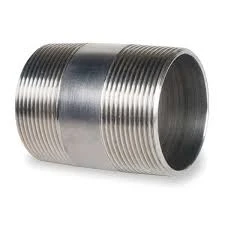-
Cangzhou Yulong Steel Co., Ltd.
-
Phone:
+86 13303177267 -
Email:
admin@ylsteelfittings.com
- English
- Arabic
- Italian
- Spanish
- Portuguese
- German
- kazakh
- Persian
- Greek
- French
- Russian
- Polish
- Thai
- Indonesian
- Vietnamese
- Zulu
- Korean
- Uzbek
- Hindi
- Serbian
- Malay
- Ukrainian
- Gujarati
- Haitian Creole
- hausa
- hawaiian
- Hebrew
- Miao
- Hungarian
- Icelandic
- igbo
- irish
- Japanese
- Javanese
- Kannada
- Khmer
- Rwandese
- Afrikaans
- Albanian
- Amharic
- Armenian
- Azerbaijani
- Basque
- Belarusian
- Bengali
- Bosnian
- Bulgarian
- Catalan
- Cebuano
- China
- China (Taiwan)
- Corsican
- Croatian
- Czech
- Danish
- Esperanto
- Estonian
- Finnish
- Frisian
- Galician
- Georgian
- Kurdish
- Kyrgyz
- Lao
- Latin
- Latvian
- Lithuanian
- Luxembourgish
- Macedonian
- Malgashi
- Malayalam
- Maltese
- Maori
- Marathi
- Mongolian
- Myanmar
- Nepali
- Norwegian
- Norwegian
- Occitan
- Pashto
- Dutch
- Punjabi
- Romanian
- Samoan
- Scottish Gaelic
- Sesotho
- Shona
- Sindhi
- Sinhala
- Slovak
- Slovenian
- Somali
- Sundanese
- Swahili
- Swedish
- Tagalog
- Tajik
- Tamil
- Tatar
- Telugu
- Turkish
- Turkmen
- Urdu
- Uighur
- Welsh
- Bantu
- Yiddish
- Yoruba

Nov . 16, 2024 02:09 Back to list
flange gost
Understanding Flange GOST Standards An Essential Guide
Flanges are integral components in piping systems, used to connect pipes, valves, pumps, and other equipment to create a tight seal. They are critical to ensuring the strength and integrity of the piping system under varying conditions. Among the various standards applicable to flanges worldwide, GOST (Russian Государственный стандарт) is a significant one, particularly in Eastern Europe and parts of Asia. This article aims to explore the importance, specifications, and applications of GOST flanges.
What is GOST?
GOST stands for “Gosudarstvennyy Standart,” which translates to State Standard in English. It is a set of technical standards that were developed during the Soviet era and are still in use today for various products and processes in Russia and its allied countries. GOST standards cover a wide range of industries, including construction, electronics, and, importantly, mechanical engineering. The flanges governed by GOST standards are commonly used in pipelines for transporting various fluids, including oil, gas, and water.
Specifications of GOST Flanges
The GOST standards provide specific guidelines on the dimensions, materials, and pressure ratings of flanges. One of the most prominent standards for flanges is GOST 12820-80, which outlines the dimensions of blind, slip-on, and weld neck flanges among others. GOST flanges are often specified with particular grades of steel, including but not limited to carbon steel, stainless steel, and alloy steels.
The specification involves critical parameters such as the nominal diameter, thickness, and pressure class of the flanges, defined to accommodate specific piping systems and operational requirements. Moreover, GOST standards detail the necessary testing methodologies to ensure quality assurance, including hydrostatic tests, dimensional checks, and material certifications.
flange gost

Applications of GOST Flanges
GOST flanges are utilized across various industries, particularly in sectors such as oil and gas, petrochemicals, water supply, and even heating systems. Their robust design and compliance with strict standards make them suitable for high-pressure and temperature applications.
In the oil and gas industry, for instance, flanges are often exposed to extreme pressures and corrosive materials, necessitating high-quality standards for safety and efficiency. The GOST standards ensure that the flanges can withstand such challenging conditions, providing reliability in critical applications such as pipeline joints and vessel connections.
In addition, the standardization offered by GOST allows for interoperability across regions and industries. For companies operating in multiple countries, adherence to GOST flanges simplifies the procurement process and ensures compatibility with existing systems.
Conclusion
In summary, GOST flange standards play a vital role in the safe and efficient operation of piping systems, particularly in demanding industrial applications. By adhering to rigorous specifications and quality assurance processes, GOST flanges ensure longevity and reliability in the transportation of fluids crucial to various sectors. Their significance cannot be understated, especially in regions heavily reliant on oil and gas, where mechanical integrity is paramount. As industries continue to evolve, the importance of GOST standards in flange design and application will remain a key component in promoting safety and operational efficiency.
Latest news
-
ANSI 150P SS304 SO FLANGE
NewsFeb.14,2025
-
ASTM A333GR6 STEEL PIPE
NewsJan.20,2025
-
ANSI B16.5 WELDING NECK FLANGE
NewsJan.15,2026
-
ANSI B16.5 SLIP-ON FLANGE
NewsApr.19,2024
-
SABS 1123 FLANGE
NewsJan.15,2025
-
DIN86044 PLATE FLANGE
NewsApr.19,2024
-
DIN2527 BLIND FLANGE
NewsApr.12,2024
-
JIS B2311 Butt-Welding Fittings LR/SR 45°/90° /180°Seamless/Weld
NewsApr.23,2024











